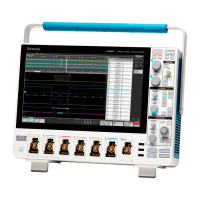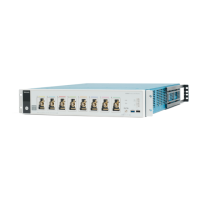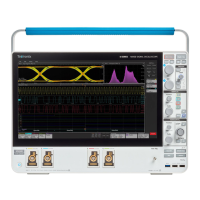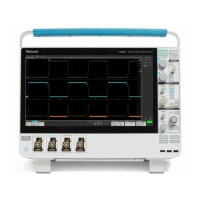Set the horizontal scale, position, and resolution (record length) to include the acquired waveform record waveform attributes of interest
with good sampling density on the waveform. These settings define the horizontal acquisition window
, described in Horizontal acquisition
considerations on page 236 .
Note: The terms vertical acquisition window and horizontal acquisition window refer to the vertical and horizontal range of the
segment of the input signal that the acquisition system acquires. The terms do not refer to any display windows on screen.
Vertical acquisition considerations
Y
ou can set the vertical scale, position, and offset of each channel independently of other channels. Vertical scale and offset specify the
vertical parameters of the waveform display for each channel. The oscilloscope only acquires signals that fall within these parameters.
The offset control subtracts a constant DC level from the input signal before the vertical scale factor is applied, and the vertical position
control adds a constant number of divisions of signal after the scale factor is applied to the resulting difference.
The vertical scale and position controls have the following effects on the waveform display and the displayed waveform:
The vertical volts per division you set determines the vertical size of the waveform display, allowing you to scale it to contain all of a
waveform amplitude or only part.
Note: Amplitude-related automatic measurements (for example, peak-to-peak and RMS) will be accurate for vertical windows if
the waveform is not clipped (that is, the waveforms are acquired). But if signal amplitude were to extend outside the vertical
acquisition window
, the data acquired is clipped. Clipped data causes inaccurate results if used in amplitude-related automatic
measurements. Clipping also causes inaccurate amplitude values in waveforms that are stored or exported for use in other
programs.
If the scale of a math waveform is changed so that the math waveform is clipped, it will affect the amplitude measurements on that math
waveform as follows:
• The vertical position adjusts the display of the graticule relative to the waveform display (position is a display control). That is all
position does; it does not determine what data is acquired as do vertical scale and offset.
• As you vary vertical offset, the middle voltage level moves relative to zero. This moves the waveform display up or down relative to the
acquired waveform. With input signals that are smaller than the window, it appears the waveform moves in the waveform view. Actually,
the offset moves the middle of the waveform display up and down on the input signal. Offset moves the waveform display to control the
portion of the waveform amplitude the display captures.
• Applying a negative offset moves the vertical range down relative to the DC level of the input signal. Likewise, applying a positive offset
moves the vertical range up.
Horizontal acquisition considerations
These parameters are shown in the next figure (horizontal window with delay on):
• The trigger position determines where the trigger event will be located in the waveform record. To see more pretrigger data move your
trigger position to the right on the graticule.
• The horizontal position determines the number of pretrigger and posttrigger samples. Samples before the trigger point are pretrigger
samples and those after the trigger point are posttrigger samples. When Delay is off, the horizontal position is the same as the trigger
position.
• The horizontal delay determines the time from the trigger point to the Horizontal Reference.
• The horizontal scale determines the horizontal size of the relative to any waveform, allowing you to scale it to contain a waveform
edge, a cycle, or several cycles.
Waveform acquisition
236
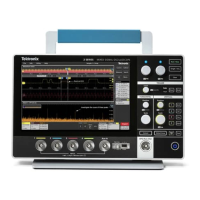
